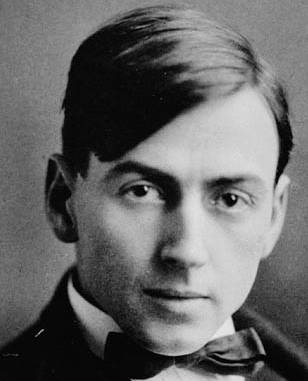
Tom Thomson, one of Canada's most beloved painters, was born on August 4, 1877, near Claremont, Ontario. Growing up in a large family of ten children, Thomson spent his early years on a farm near Leith, on Georgian Bay. His upbringing was steeped in nature, music, and a deep connection to the land—elements that would profoundly influence his later work as a painter.
Thomson’s childhood, by most accounts, was unremarkable in terms of early artistic talent. His father, John Thomson, recalled his son as a normal, healthy boy who loved fishing and the outdoors. Drawing and painting were common pastimes in the Thomson household, but Tom’s passion for the arts didn’t fully blossom until much later in life. The Thomson family was also musically inclined, with Tom playing various instruments, including the mandolin and banjo, and singing in the local choir.
In his early adulthood, Thomson’s life took a series of twists and turns that seemed to lead him far from the path of a professional artist. After contracting a lung ailment that interrupted his schooling, Thomson spent a year roaming the countryside, a time that likely deepened his connection to nature. His early working life was characterized by short stints in various jobs, including an unsuccessful attempt to enlist in the Boer War, followed by a brief apprenticeship as a machinist.
In 1901, Thomson moved to Seattle, where he studied calligraphy and worked at a photogravure studio. His time in Seattle was significant, as it marked the beginning of his interest in art. However, after a failed marriage proposal to Alice Lambert, a young woman he loved, Thomson abruptly returned to Canada in 1904, setting the stage for the most pivotal chapter of his life.
Back in Canada, Thomson worked in various photogravure studios, where he honed his skills as a draftsman and designer. But it wasn’t until he joined Grip Ltd. in 1907 or 1908 that Thomson truly began to find his artistic voice. At Grip, he met a group of like-minded artists who would later form the Group of Seven, including J.E.H. MacDonald, Arthur Lismer, and Frederick Varley. This community of artists sparked Thomson’s creativity and encouraged him to pursue painting more seriously.

Thomson’s first significant encounter with the Canadian wilderness came in 1912 when he spent time in Algonquin Park. This experience profoundly influenced his work, leading him to create some of his most iconic paintings. His love for the rugged landscape of Northern Ontario became a central theme in his art, as he sought to capture the essence of the Canadian wilderness.
Despite his growing success as a painter, Thomson remained a complex and enigmatic figure. Friends and acquaintances often described him as shy, melancholic, and deeply introspective. He was also known for his generosity, kindness, and occasional bouts of temper. Thomson’s life in the wilderness, where he spent much of his time fishing, canoeing, and exploring, became inseparable from his identity as an artist.
By 1914, Thomson had gained the support of Dr. James MacCallum, a patron who provided financial backing, allowing Thomson to devote himself entirely to painting. That same year, the Ontario government purchased his painting Northern Lake, marking the beginning of his recognition as a significant Canadian artist.
Thomson’s work continued to evolve, characterized by bold colors, simplified forms, and a deep connection to the natural world. His paintings, such as The West Wind and The Jack Pine, are celebrated for their ability to convey the raw beauty and power of the Canadian landscape.
Tragically, Thomson’s life was cut short under mysterious circumstances. On July 8, 1917, his body was found in Canoe Lake, Algonquin Park. The cause of his death remains a subject of speculation, with theories ranging from accidental drowning to foul play. Despite his untimely death, Thomson’s legacy endures through his art, which continues to inspire generations of artists and nature lovers alike.
Tom Thomson’s life was a testament to the power of nature, solitude, and creativity. His paintings remain a vital part of Canada’s cultural heritage, capturing the spirit of the wilderness he so deeply loved.
Browse our collection of Canadian paintings for sale at the Canadian Classic Fine Art gallery, The best place to buy a painting online. We provide free shipping anywhere in Canada and the United States. Our Montreal art gallery sells paintings online exclusively and have a 14 days return policy.
